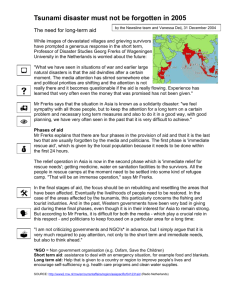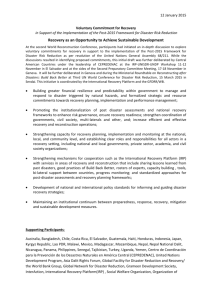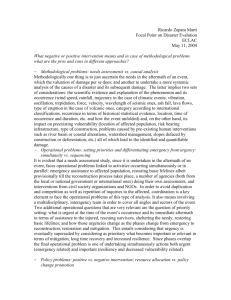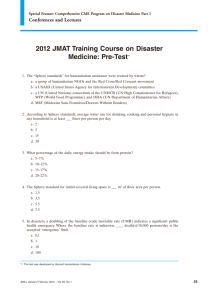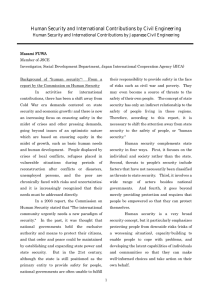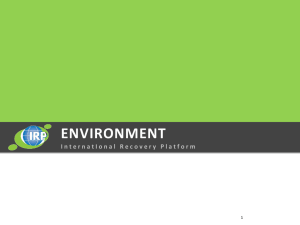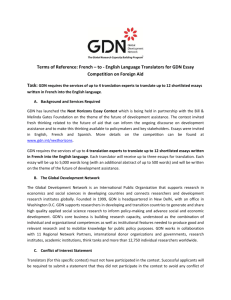Word file
advertisement
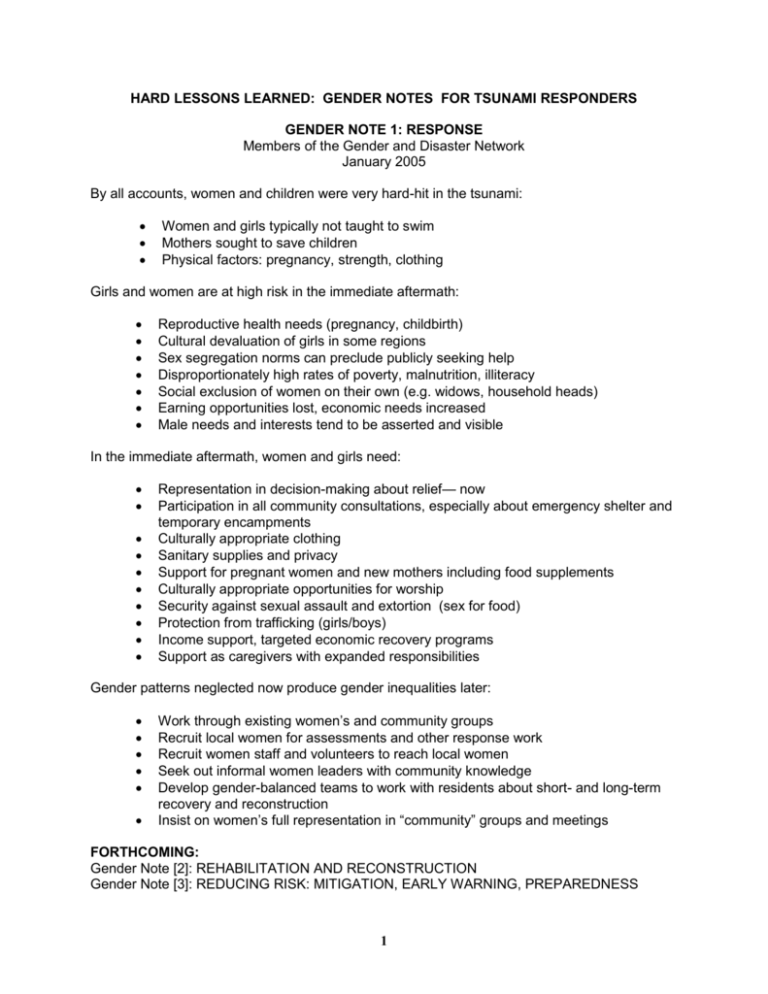
HARD LESSONS LEARNED: GENDER NOTES FOR TSUNAMI RESPONDERS GENDER NOTE 1: RESPONSE Members of the Gender and Disaster Network January 2005 By all accounts, women and children were very hard-hit in the tsunami: Women and girls typically not taught to swim Mothers sought to save children Physical factors: pregnancy, strength, clothing Girls and women are at high risk in the immediate aftermath: Reproductive health needs (pregnancy, childbirth) Cultural devaluation of girls in some regions Sex segregation norms can preclude publicly seeking help Disproportionately high rates of poverty, malnutrition, illiteracy Social exclusion of women on their own (e.g. widows, household heads) Earning opportunities lost, economic needs increased Male needs and interests tend to be asserted and visible In the immediate aftermath, women and girls need: Representation in decision-making about relief— now Participation in all community consultations, especially about emergency shelter and temporary encampments Culturally appropriate clothing Sanitary supplies and privacy Support for pregnant women and new mothers including food supplements Culturally appropriate opportunities for worship Security against sexual assault and extortion (sex for food) Protection from trafficking (girls/boys) Income support, targeted economic recovery programs Support as caregivers with expanded responsibilities Gender patterns neglected now produce gender inequalities later: Work through existing women’s and community groups Recruit local women for assessments and other response work Recruit women staff and volunteers to reach local women Seek out informal women leaders with community knowledge Develop gender-balanced teams to work with residents about short- and long-term recovery and reconstruction Insist on women’s full representation in “community” groups and meetings FORTHCOMING: Gender Note [2]: REHABILITATION AND RECONSTRUCTION Gender Note [3]: REDUCING RISK: MITIGATION, EARLY WARNING, PREPAREDNESS 1 SELECTED RESOURCES FOR PRACTITIONERS [1] Gender Dimensions in Disaster Management: A Guide for South Asia, by Madhavi Malalgoda Ariyabandu and Maithree Wickramasinghe, 2003. Book. 176 pp. Source: Published by ITDG South Asia. Available from ITDG-South Asia, 5 Lionel Edirisinghe Mawatha, Kirulapone, Colombo 5, Sri Lanka, Tel: +94 11 2829412, Fax: +94 11 2856188, E-mail: general@itdg.slt.lk. Cost: US $12.00 /Sri Lanka Rs. 500.00.The proceedings of the book will bereinvested in community disaster risk reduction projects. A Little Gender Handbook for Emergencies (Or Just Plain Common Sense), 2004, 13 pp. Oxfam UK, Humanitarian Department. Source: http://homepage.oxfam.org.uk/emergencies/ed_general/scipio/gender_handbook.htm Weaving Gender in Disaster and Refugee Assistance, and accompanying Field Checklists. Report prepared by Interaction: American Council for Voluntary International Action. Washington, D. C. Includes conference papers and field practice checklists. Also see Best Practices for Gender Integration in Organizations and Programs From the InterAction Community, 1998. Source: www.interaction.org. Gender Equality and Humanitarian Assistance: A Guide to the Issues, 2004, Canadian International Development Agency (Beth Woroniuk, consultant), 29 pp: www.cida.gc.ca) or http://www.acdi-cida.gc.ca/INET/IMAGES.NSF/vLUImages/Africa/$file/Guide-Gender.pdf Integrating Gender into Emergency Responses, and Gender, Emergencies and Humanitarian Assistance: BRIDGE Reports on Gender and Health. Source: http://www.ids.ac.uk/bridge/report Promoting social justice in disaster reconstruction: guidelines for gender-sensitive and community-based planning [E. Enarson, Report from Gujarat, India 2001]. GDN: http://online.northumbria.ac.uk/geography_research/gdn. Working with women in emergency relief and rehabilitation programmes. Field studies Paper No. 2. League of Red Cross and Red Crescent Societies. 1991Geneva: IFRC. AND. . . Join the Gender and Disaster Network listserv for continuing discussion of the gender dimension of the tsunami, other less visible environmental disasters and complex emergencies and the continuing “daily disasters” in women’s lives around the world: http://online.northumbria.ac.uk/geography_research/gdn. Gender and Disaster Sourcebook coming soon. This user-friendly international collection of gender resources in disaster contexts will soon be available on the GDNetwork website. 2



